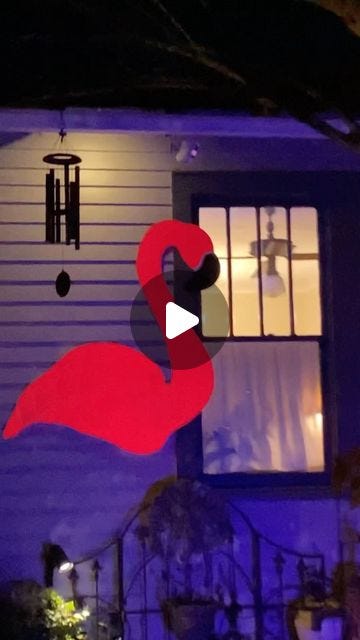Pedaling to Parades: Downtown and Mid City parades explained
Carnival season is in full swing, which means downtown Baton Rouge is about to be littered with celebrations. Rather than trying to park among the madness, have you considered biking?
The Electric Depot has ample parking and is just about a mile away from River Road and a little over a mile away from the heart of Spanish Town. You could park at the Depot and bike your way down to the parade routes.
Upcoming downtown parade opportunities include:
Friday, February 2: Krewe of Artemis (7 pm)
Saturday, February 3: Krewe Mystique de la Capitale (2 pm)
Saturday, February 3: Krewe of Orion (6:30 pm)
Sunday, February 4: Mid City Gras (1 pm)
Saturday, February 10: Spanish Town (12 pm)
Oldest Parade?
That would be Krewe Mystique de la Capitale. It started when two krewes, Knights of Nineveh and the Ladies of Antioch, got together and decided to put on a parade. They say the first one had nearly 100,000 people in attendance.
What’s a Greek God Got to Do with Mardi Gras?
Ever wonder why so many parades are associated with mythology? The tradition goes back to the mid-19th century. Mardi Gras krewes adopted themes from classical mythology, including Greek gods, to infuse their celebrations with symbolic storytelling and visually striking imagery.
Greek gods like Dionysus, the god of wine and festivity, resonate particularly well with the spirit of Mardi Gras, wouldn’t you say? Over time, this blend of mythology and carnival spirit has become a tradition.
One Badass Babe!
Artemis is the goddess of wild animals, the hunt, vegetation, chastity and childbirth. The parade associated with her was founded in 2001 and is the first and only all-female parade. They do, however, seem to have kings and dukes, and all kinds of other male royalty in its “court,” so I’m not sure how all that works out.
Not Just a Constellation
Orion is the son of sea-god Poseidon. Because of his daddy, he could walk on the waves. He’s also a giant and famous for his skills as a hunter. Orion is one of the most well-known constellations in the sky. As for the parade, it’s been around since 1998 and is a “New Orleans-style” parade.
Flocking Downtown
Perhaps the most noticeable and iconic mascot in the Red Stick is the pink flamingo! The calling card of the Spanish Town parade started out as a way of distinguishing this event as the “poor man’s parade.” The cheap, plastic lawn ornament was celebrated for its tackiness and a deliberate nod to the parade’s irreverent and inclusive ethos.
The Flamingo Flock Tradition
A significant tradition involves placing a flock of flamingos on the University Lakes, a ritual that signals the approach of the Spanish Town Mardi Gras. Spearheaded by the Society for the Preservation of Lagniappe in Louisiana (SPLL), this practice has been a fixture for over 30 years. But this year things had to change.
Due to the work on the LSU Lakes, the large wooden flamingos were scattered around the city. They were set out under the cover of darkness and by morning, there was a full-blown scavenger hunt to find them.
RELATED: Spanish Town Mardi Gras holds ‘secret flocking’ amid lake dredging
Beyond the Mascot
The Spanish Town parade, under the guidance of SPLL, has evolved into more than just a celebration. It's a platform for freedom of expression and community contribution. Annually, the sale of flamingos, both large and small (referred to as weeMINGOs), helps fund local charities, with about $100,000 donated each year.
As the parade continues to evolve, the flamingo remains a steadfast emblem of a community united in its colorful history and its commitment to making a difference.
Not Everyone Agrees
The Spanish Town parade has gained a reputation for being a bit too raunchy for most. More notably, there were racist and degrading jokes being made in the years following the murder of Alton Sterling and the rise of the Black Lives Matter movement.
In 2016, at least two floats rolled with the slogan “Pink Lives Matter.” One featured a drawing of a flamingo being beaten with a police baton and had an “I can’t breathe” sign around its neck. Obviously, this struck a negative chord with many people.
It was in the wake of this controversy that the Mid City Gras Parade was conceptualized.
Let’s Hear it for the Squirrels
Mid City Gras is the youngest and closest parade to Downtown East. The parade is a short one because it’s primarily a walking parade. It only extends the length of North Blvd, starting at 19th Street and ending at the Community College, which is less than a two-mile stretch.
During the parade, you’re going to see a lot of squirrel themes. That’s because the squirrel is the official mascot of the parade. This year’s theme is “Once Upon a Squirrel.”
Why a Squirrel?
One of the defining features of Mid City is its oak trees. And who loves an oak tree more than a cute squirrel?
According to SquirrelEnthusiast.com, the oak tree is a top pick for a squirrel. Not only do they have a great food source (acorns), but their size provides lots of cover from predators and the elements.
There are other parades, but for the purpose of this article, I’ve kept it to the ones we have coming up. Of course I missed out on highlighting the annual dog parade, Krewe of Mutts, which happened last weekend. Personally, that one is my favorite.





